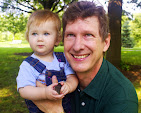Trains of the World
When travelling, my preference is to take public transportation. Partly, this is me being a cheapskate. More relevant, if I am going somewhere, I want to see how people really live. When catching planes, what you really want to avoid is getting caught in bad traffic. Train timelines can be a bit more predictable than the city freeway experience. Slow and steady makes the connection.
The perfect experiment happened yesterday. We had a very long travel day including a 15 hour flight and three train trips. Each train trip included a transfer.
I tried transit at Minneapolis/St. Paul, Chicago and Beijing. Did the trains differ from place to place?
In my experience yesterday, the experience each place was not that much different.
The first leg was home to the MSP airport. In about an hour, we took a rapid transfer bus and then a train. The bus was the most casual transportation. A bus driver spoke to us live and in person. It seemed a little slow as we often waited for traffic lights. We didn't hit connections too well either, we waited closer to ten minutes both times than zero. But, taxis in this town are not that much quicker and we had not reserved one, so the bus/train it was.
The blue light rail line in Minneapolis went along briskly. It is well designed along the patch nearer the airport. There was not much interference from car traffic.
Southwest Airlines usually gives good service. We waited on the plane more than an hour before take off, but that was the airport's fault. The official cause was high winds closing all but one runway. (Winds did not feel abnormal.)
An hour later we are in Chicago Midway, needing to be at O'Hare.
A taxi takes about an hour per Google Maps. The El takes takes 1:40. We go with the El.
The El goes per the timetables. The route to Clark and Lake has a lot of stops and we have to transfer using elevators due to our stroller child. But, elevators work well. The stroller child notices small mice on the tracks as we wait from the Blue line to O'Hare so it feels like the big city. An officially prohibited God loving beggar joins us in transit briefly. Also a man eats several pieces of KFC chicken. It feels like a working man's train.
The timeline is met but there is lots of walking to Terminal 3 after leaving the El.
We feel rushed from losing our hour on the runway at MSP and the American Airlines check in feels slow even though we don't hit much of a line. We have time to eat before our plane boards, though. So, any anxiety was wasted.
We arrive in China on time and hit a moderately long Customs line. But, no biggie. This provides time to install the SIM card in my phone. It is getting late. Hopefully, the trains will be still running.
The Airport Express feels very fast and gets us close to Central Beijing. I was surprised to see African American Expats conversing, a big class contrast from the local working man of Chicago. This was a 25 yuan per adult trip, though, which makes it pricey for China citizens.
Getting to the Metro 2 line was challenging since we used an elevator which was not set up for transfers. An official looked at our payment proof and used a key to let us reenter the system. We then stood in a line to buy Metro tickets. An automated teller would have been preferred due to language issues but they all looked to be turned off. I got two tickets for six yuan, just under a dollar total, and we made it to our hotel quickly with the lack of an elevator the biggest challenge. A Chinese man helped us carry the stroller up the stairs. I later found out that elevators are not everywhere you might need in Beijing.
China was cheapest, but all public transportation was very cheap. In all three systems there were stretches where public transport was quicker than a taxi, but the total trip would have been up to 50% faster in each case with a taxi, at a cost of five to fifteen times more.
Beijing seemed most efficient, though least good if you were disabled. MSP was a little slow as the bus rapid transit waited a lot at traffic lights. Chicago seemed most ready for an update--a more direct line between the airports would seem justified, plus our one year old pointed at the mice.
People wise, every place felt pretty much the same. Beijing is probably safest feeling. Chicago would give you the most anxiety if you are new to urban experiences.
Beijing and St. Paul had new lines compared to the El. But, huge differences in the transit experience were not obvious.
Transit anywhere felt like transit everywhere. The world continues to get smaller.
Update:
On our trip home from Shanghai, we took a 300 km/hr MagLev train, $9 per person. That felt different. Maybe, Chicago needs one.
Labels: Beijing trains, Chicago, MSP, travel
